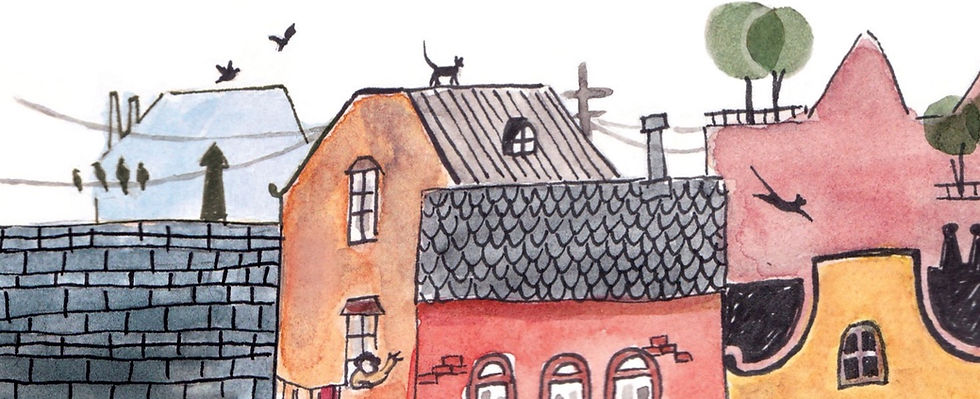
I was struggling to come up with a title for this final blog of this series. What could capture the essence of the Costa Brava--the coves, colourful boats and marinas; the mountain backdrop, relentless dry wind and sandstorms; brown olive groves and dusty vineyards; vanishing rivers and streams; ancient ruins; medieval towns and churches; Catalan food and language?
We first came here in 1972, after we met on a train station in Copenhagen and spent a few days in the budget seaside 'resort' of Calella before going our separate ways-- Richard to Turkey and me to London. But we kept in touch and the rest is history.
So--the title of this blog entry. Today we went to Figueres and found a wonderful Italian restaurant with great pizza, salad and the music of Andrea Bocelli and Sarah Brightman. I found my title: Time to Say Goodbye. We're leaving Spain, probably for good but this time together.
But there's a sad aspect to this--and the scorched landscape tells the story. This relatively small area of north-eastern Spain is a microcosm of human history and our impact on the environment. For example, the Onyar River in Girona that looked healthy four years ago, is showing the effects of the ongoing drought.

It was a relief though to find this peaceful, wooded spot on the lake at Banyuls inland from here.
When the first hunter gatherers crossed the Pyrenees thousands of years ago this area was covered in forest and the human footprint was relatively small such as these funeral stones at Mas Isach behind up on the hill behind us.
Millenia later, the Iberian people built substantial towns protected by thick walls and incorporating engineering works such cisterns for storing grain and water. One such site was the large Iberian settlement of Ullastret. The Iberian Indiketes built an impressive city but the presence of human skulls, supposedly of defeated enemies, nailed to walls made clear that life was could be nasty, brutish and short.
But even though warfare was a fact of life, so was trade. Empúries, another Iberian town right on the coast, was settled in the 6th century BC by Greek traders who also did business with the Indiketes of Ullastret. They also began cutting the forests to provide timber for ships, as did the Romans who followed.

In the 3rd century BC the Romans landed in Empúries as part of their war effort against Carthage. This settlement was not a peaceful trade enterprise but a militaristic effort to dominate the western Mediterranean.

Unfortunately for the Iberians, once the Romans had defeated Carthage, they didn't leave. The Iberians weren't happy about this so rebelled and as with the Numancians in the west of Spain, it didn't end well. The Romans quelled the uprising by forcing them to abandon Ullastret to teach any other would-be rebels a lesson.

After the fall of the Roman empire, the Visigoths migrated to this area from the north. Amongst the ruins of the Greek and Roman buildings of Empúries are the remains of an early medieval Christian chapel and necropolis.

Larger towns and villages built later in the middle ages can be found throughout this area surrounded by defensive walls and watchtowers. Picturesque and charming today, they are reminders of the perils our ancestors lived with on a daily basis.
Even monasteries such as Sant Pere de Rodes required substantial defences.
Ruins upon ruins. One civilisation dies, another takes its place. But each time the land is further degraded. Few woods remained and the land is now much drier with a thin layer of nutrient-poor soils that support hardy plants such as olives, vineyards and cereals. Tourism too has had an impact on the land with poorly constructed, ugly hotels built on land gouged out of olive groves and along the shores.
So the historian in me asks a question: Will these be the next in the series? Nothing in history tells me otherwise. But now there's a depressing difference. Whereas other civilisations were replaced by others -- and none have been particularly benevolent--will this be the last? Climate change together with centuries of damaging land use are all too visible here. This might have been what Marc Lacroix was suggesting in his Christ of the Rubbish (Dali's house, Portlligat).

Or this sand artist on the beach at Roses?

So as not to end on too gloomy a note--I'll finish this last blog with a bit of whimsy, thanks to that flamboyant provocateur, Salvador Dali, who also shared this patch of ground. What might future archaeologists make of this?
And finally, fifty years on, farewell to the Costa Brava at El Barroco, a Dali-inspired Lebanese restaurant at Cadaquez.












































































Comments